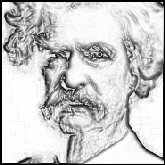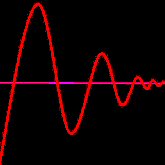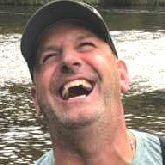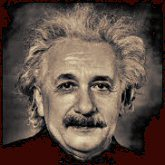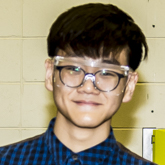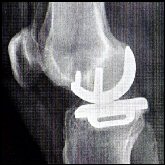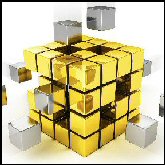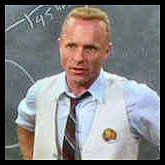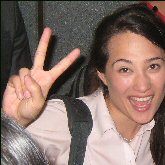 Optimizing Human Behavior with a STEM Model
Optimizing Human Behavior with a STEM Model
by Moises Goldman PhD
The Human Conundrum
For the last 15 years I have given numerous seminars aimed at optimizing executive and managerial performance in technology driven firms. The goal is to optimize departmental performance resulting in the larger optimization of an entire firm. As the theory goes: If the whole is the sum of the parts, and each part is optimized, then the whole is optimized.
These experiences have challenged my ability to communicate with people involved in STEM fields. This group represents a highly gifted segment of the population, and they tend to be very results driven. How does one reason, interpret, and convince scientists to modify their own behavior?

At first, I struggled with the appropriate lingo. I pondered how to describe my ideas using managerial jargon. I realized that I needed another language—a language that both empirical and intuitive thinkers will readily grasp and put to good use.
Then my eureka moment came to me. STEM initiatives are defined by basic human bevavior and not the other way around.

To some, this may seem counterintuitive, so let me elaborate. If we first accept and understand any given issue at hand through basic human reasoning, we can then interpret it in a STEM format. Once we do that, we can use the tools of science to bring about an optimized outcome. Let me add some clarity with the following example:
.
Kalman Filtering
My Ph.D. is in Inertial Navigation and my Masters in Control Systems. I spent many years as an executive in the aerospace industry and came to be expert in Kalman Filtering, a complex mathematical algorithm used in the guidance and navigation of aerospace vehicles. It occurred to me to apply this knowledge to the human equation.
Kalman Filtering is also known as Linear Quadratic Estimation (LQE), but it’s not necessary to go into the math here. I will attempt to make this example clear and concise. All we need is a simple diagram. I’ll describe it in layman’s terms and then apply it to the human condition.
The diagram below describes the guidance control of a space vehicle. The vehicle is at position “time-zero” or T(0). We want to get to position T(1,000,000). We calculate the location of our target relative to our present location. We recognize that any internal disturbance, such as bad sensors, electronics, and perhaps bad computations must be eliminated. (We get rid of them.)

- We predict the trajectory of the vehicle over a short increment of time.
- We measure the actual flight path against our target and factor in real environmental conditions (noise), such as wind speed, meteorites, etc.
- We correct our trajectory.
The vehicle is now at T(1)—a very small part of the entire trip. T(1) is the next starting position. The algorithm repeats, bringing the vehicle to the next position T(2), then T(3), and so on. We iterate—continue to perform the same steps—predict, measure, correct—to optimize the overall trajectory to the target—T(1,000,000).
Perhaps you recognize this as a description of the way a child learns to walk. It’s commonly called a feedback loop. It governs behavior in many human pursuits. It’s the way our central nervous system directs us to negotiate a curve while driving down the road. It’s the way a baseball player catches a ball and executes a play. It’s how a circus performer walks a tightrope. It’s the way we all learn optimum behaviors.

Our minds perform this function intuitively through ordinary mental concentration, focus, or attentiveness. Concentration is an iterative process and the higher the number of iterations, the higher the degree of accuracy.
.
Optimizing Human Behavior
If we can model our human behavior and reasoning in STEM format then we are able to optimize it. As an example, let’s choose a simple human behavior and describe it using Kalman Filtering:
Behavior—Tomorrow I’m taking a final exam; I need to arrive at 8 am—the target.

Method—My class always meets at that time, so I already know approximately when to wake up. Since there cannot be any internal disturbances, I eat a good dinner, plan my breakfast and what to wear to school. I give myself time to study and get to bed early. I set my alarm for 7 am. I’m at position T(0) on the diagram.
- Prediction—I estimate the time it takes to get ready and walk to the exam. (About the same as a normal day.)
- Measurement—I reach the door and glance at my watch. It’s raining and I’m running late.
- Correction—I grab an umbrella while at the same time speeding up my pace.
I get to the exam location on time, and the algorithm repeats itself for the next activity (assuming my intention is to optimize the next behavior).
.
A Simple Model for STEM Communication
It’s amazing how simply human behavior can be optimized using a STEM model—whatever the circumstances may be.

We know our current state. [We are on a diet, T(0).]
- We predict the meal that we are going to eat. [A nice juicy zero carb steak.]
- We eliminate any internal errors [If we’re cooking it, we make sure all the ingredients are there; check the labels for carbohydrate count; grill in working order; plates and glasses, etc.]
- We set out to eat, then get a call that we’re needed immediately somewhere else. We make a correction. [Either we eat extremely fast or put the meal away for later, at T(1).]
.

Optimizing Complex Behavior
Now let’s apply this same optimization process to a non-linear human behavior—investing in the stock market. We have some money to invest, T(0), in a given company stock. We eliminate all the internal disturbances by doing our homework. We read quarterly statements, look at the fundamentals, research the competition, analyze price and volume activity on a stock chart, and interpret technical indicators such as MACD and Slow Stochastics.
- We predict our next move—[buy the stock]—T(0).
- As we are getting ready to buy the stock we hear news of the latest unemployment report and we realize it will have a direct effect on the stock we are buying. We must correct. [We buy more, less, a different stock, or sit tight. Which correction we use will have a direct effect on the optimization.]
- We decide to buy more of the stock. Now we are at T(1), and must predict T(2)—[sell, hold, or add to position].
.

Achieving Greater Accuracy
The more we are able to reduce the size of T (time), the more we increase the Kalman iterations, and the better the optimization. In human terms, optimization is inversely proportional to the size of T, and directly proportional to Intelligence. Please note that human thinking is continuous in time, so the smaller our intervals, the closer we approximate a continuum.

As you see, I found my language for communicating optimization of human activity in any given organization. It is an amazingly powerful tool.
■
.
MORE FROM MOISES COMING SOON
.

Moises Goldman at IMSA
About the Author
Dr. Moises Goldman is uniquely involved with STEM (Science, Technology, Engineering, and Mathematics). He is a member of several advisory boards at MIT and is a founding member of the TALENT program at IMSA.
Kalman Diagram—Moises Goldman
Portrait of Moises & Chicago Globe—John Jonelis
Other graphics—MS Office
Chicago Venture Magazine is a publication of Nathaniel Press www.ChicagoVentureMagazine.com Comments and re-posts in full or in part are welcomed and encouraged if accompanied by attribution and a web link. This is not investment advice. We do not guarantee accuracy. Please perform your own due diligence. It’s not our fault if you lose money.
.Copyright © 2017 John Jonelis – All Rights Reserved
.
.




